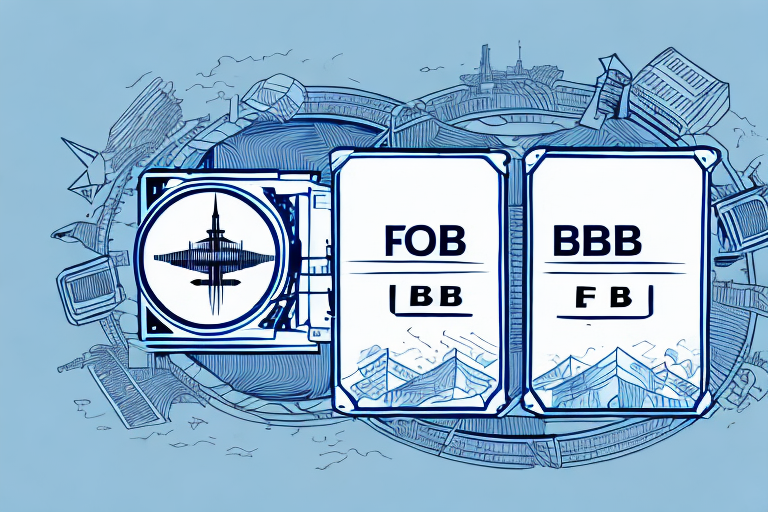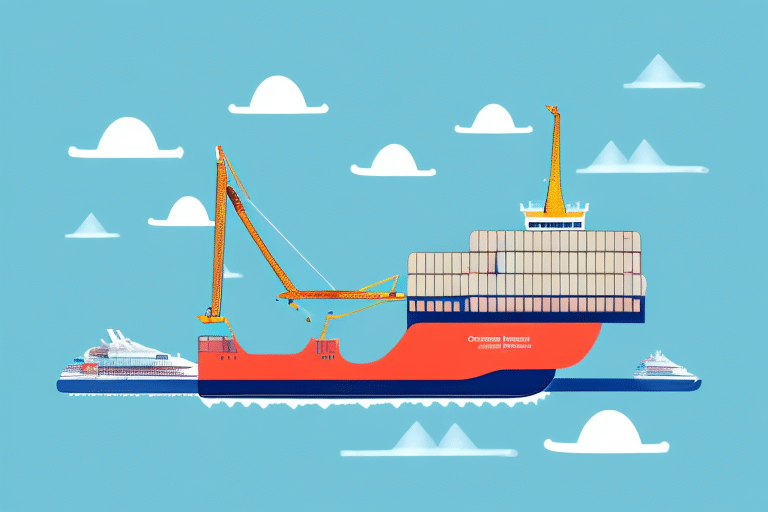Understanding Freight on Board (FOB) Destination Shipping
In the logistics industry, understanding different shipping terms and arrangements is crucial for optimizing supply chain efficiency. One such term is Freight on Board (FOB) Destination Shipping. This method outlines the responsibilities and risks associated with transporting goods from the seller to the buyer's location. By the end of this article, you'll gain a comprehensive understanding of FOB destination shipping, its advantages and disadvantages, costs, best practices, and future trends.
The Fundamentals of FOB Destination Shipping
What is FOB Destination Shipping?
FOB Destination Shipping is a shipping arrangement where the seller assumes responsibility for the goods until they reach the buyer's specified location. This means the seller handles all costs and risks associated with transporting the goods, including freight charges, insurance, and potential damages or losses during transit.
How Does FOB Destination Shipping Work?
Under FOB destination terms, ownership of the goods transfers to the buyer only upon delivery to the specified destination. The seller selects the carrier, manages the shipment, and bears all associated costs. This method is particularly beneficial for high-value or fragile items where minimizing risk is essential.
Comparing FOB Destination Shipping with Other Methods
FOB Destination vs. FOB Shipping Point
Unlike FOB Shipping Point, where the buyer takes ownership as soon as the goods leave the seller's premises, FOB Destination places the responsibility on the seller until delivery. This distinction affects who bears the risk and cost during transit.
Other Shipping Methods
- Air Shipping: Fastest method but most expensive, ideal for time-sensitive or lightweight goods.
- Ocean Shipping: Cost-effective for large volumes over long distances, though slower and susceptible to weather delays.
- Road Shipping: Flexible and suitable for regional deliveries, but can face traffic-related delays.
Advantages and Disadvantages of FOB Destination Shipping
Advantages
- Reduced Risk for Buyers: Buyers are protected from damage or loss during transit since the seller retains ownership until delivery.
- Cost Control: Buyers do not incur transportation costs until goods are delivered, aiding in budget management.
- Improved Customer Satisfaction: Reliable delivery reduces the likelihood of disputes over damaged goods.
Disadvantages
- Higher Costs for Sellers: Sellers bear all transportation costs and risks, which can increase overall expenses.
- Longer Transit Times: Sellers might choose less direct routes to manage costs, potentially delaying delivery.
- Limited Carrier Control for Buyers: Buyers have less say in the choice of carrier, which might affect service quality.
Cost Implications of FOB Destination Shipping
While FOB Destination might appear more expensive initially due to sellers covering transportation and insurance costs, it can lead to long-term savings by reducing the chances of goods being damaged or lost. According to [Supply Chain Management Review](https://www.scmr.com/), effective FOB Destination arrangements can lower overall logistics costs by streamlining responsibilities and reducing overlapping expenses.
Enhancing Control and Visibility
Tracking and Management
Modern technology plays a pivotal role in FOB Destination shipping by enabling real-time tracking and better management of shipments. Tools like [Fleet Management Systems](https://www.fleetmanagement.com/) allow sellers to monitor the progress of shipments, ensuring transparency and timely deliveries.
Reducing Disputes
Clear visibility into the shipping process minimizes misunderstandings between sellers and buyers, reducing potential disputes over damages or delays.
Challenges and Solutions in FOB Destination Shipping
Common Challenges
- Extended Delivery Times: Can impact buyer satisfaction and supply chain efficiency.
- Higher Seller Costs: Increased financial burden on sellers to manage transportation.
- Risk of Damage or Loss: Despite seller responsibility, unforeseen events can still pose risks.
Solutions
- Select Reliable Carriers: Partnering with reputable carriers can mitigate risks associated with transportation.
- Comprehensive Insurance: Ensuring adequate coverage protects against potential losses.
- Effective Communication: Maintaining clear communication channels between all parties ensures smooth deliveries.
Legal Considerations in FOB Destination Shipping
FOB Destination agreements involve intricate legal aspects, including liability, insurance requirements, and compliance with transportation laws. It's essential to consult with legal experts to draft clear contracts that outline responsibilities and protect both parties' interests. Resources such as [LegalZoom](https://www.legalzoom.com/) offer guidance on creating binding shipping agreements.
Best Practices for Implementing FOB Destination Shipping
- Clear Contract Terms: Define all responsibilities, costs, and risk transfer points in the contract.
- Choose the Right Carrier: Assess carriers based on reliability, cost, and service quality.
- Utilize Technology: Implement tracking and management systems to enhance visibility.
- Regularly Review Processes: Continuously assess and improve shipping procedures for efficiency.
Future Trends in FOB Destination Shipping
The logistics industry is continuously evolving, and FOB Destination Shipping is no exception. Emerging trends include the integration of artificial intelligence and machine learning to optimize shipping routes, the adoption of blockchain for secure and transparent transactions, and the increasing emphasis on sustainability through eco-friendly transportation methods. According to a report by [McKinsey & Company](https://www.mckinsey.com/), these advancements are set to revolutionize how businesses manage their shipping and logistics operations.
Conclusion
Understanding and effectively implementing Freight on Board Destination Shipping can significantly enhance your supply chain's efficiency and reliability. By weighing the advantages and disadvantages, addressing potential challenges, and staying abreast of industry trends, businesses can optimize their shipping strategies to achieve cost savings and improve customer satisfaction.








